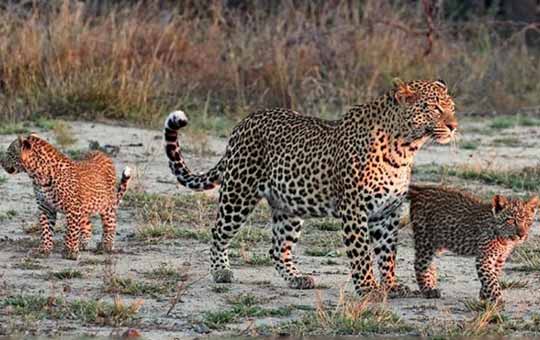Kumbhalgarh Wildlife Sanctuary – A Natural Gem of Rajasthan
Nestled amidst the rugged terrain of the Aravalli hills in Rajasthan, Kumbhalgarh Wildlife Sanctuary is a haven for wildlife lovers, nature enthusiasts, and trekkers. Spanning over 600 square kilometers across the districts of Rajsamand, Udaipur, and Pali, the sanctuary surrounds the majestic Kumbhalgarh Fort, a UNESCO World Heritage Site. The sanctuary is known not only for its rich biodiversity but also for its breathtaking landscape, offering a unique blend of history, culture, and nature.
Flora and Terrain
The sanctuary’s landscape is predominantly hilly, covered with dense forests of dry deciduous trees and thorny scrub. The main vegetation includes species like Dhok, Salar, Churel, and Khair, which are well-suited to the semi-arid climate. Seasonal streams and riverlets flow through the forest, with the Banas, Sumer, and Mithari rivers nourishing the ecosystem. The lush greenery during the monsoon and the cool winter months create ideal conditions for trekking and jungle safaris.
Wildlife
Kumbhalgarh Wildlife Sanctuary is home to a variety of mammals, birds, and reptiles. It is one of the few sanctuaries in Rajasthan where you can spot the elusive Indian leopard. Other notable mammals include sloth bears, hyenas, jackals, jungle cats, sambhar, nilgai, chinkara, and wild boars. The sanctuary is also home to the rare Indian wolf, which is an important predator in this ecosystem.
Bird watchers will find the sanctuary equally rewarding, as it hosts over 200 species of birds. These include peacocks, grey junglefowls, parakeets, bulbuls, doves, and various species of eagles and vultures. The forest also supports reptiles such as snakes and monitor lizards.
Activities and Tourism
Visitors to the sanctuary can engage in a variety of eco-tourism activities. Jeep safaris and horseback safaris are popular ways to explore the terrain and spot wildlife. Trekking through the sanctuary’s trails offers panoramic views of the hills and valleys, with some routes leading up to Kumbhalgarh Fort, which stands tall with the second-longest wall in the world after the Great Wall of China.
The best time to visit the sanctuary is from October to March, when the weather is pleasant and wildlife sightings are more frequent.
Conservation and Importance
Kumbhalgarh Wildlife Sanctuary plays a vital role in conserving biodiversity in Rajasthan. It acts as a corridor for wildlife movement between different forest areas and helps preserve the region’s ecological balance. Efforts are ongoing to improve the habitat and protect endangered species through better management and awareness.
